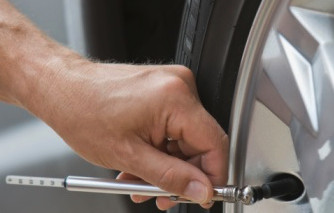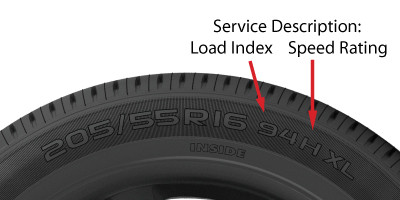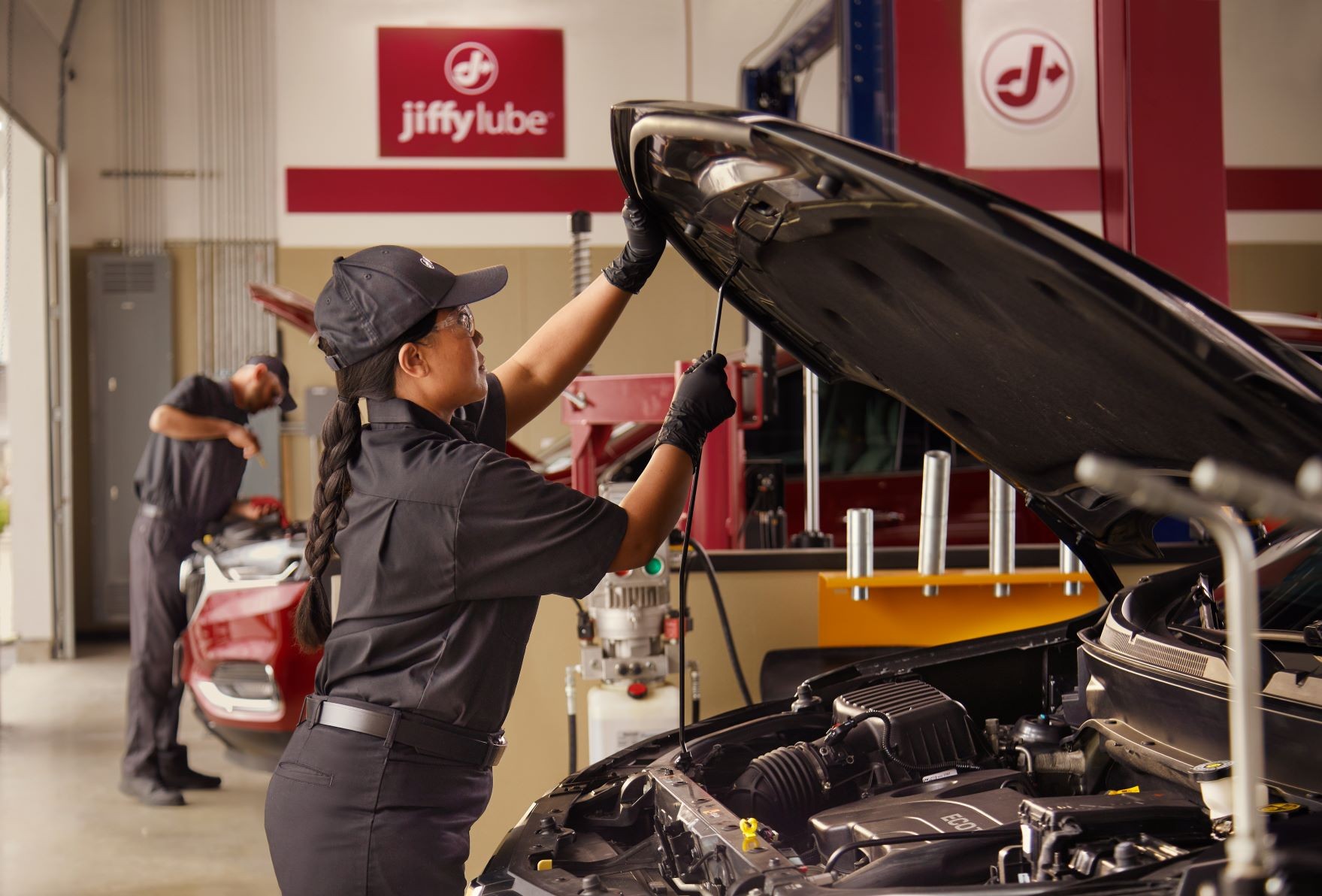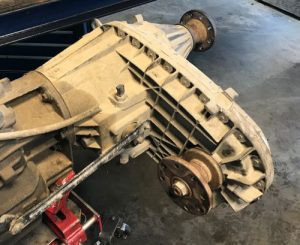How to Check Tires for Pressure, Wear, and Damage: A Complete Guide

Checking tires for pressure, wear, and damage is paramount for vehicle safety and performance. This comprehensive guide, brought to you by CARDIAGTECH.NET, provides a detailed, step-by-step approach to ensure your tires are in optimal condition. Identifying these issues early can prevent accidents and save you money. We’ll cover everything from visual inspections to understanding tire markings, offering expert tips for maintaining your tires.
1. Why Tire Checks Are Essential for Your Safety
Why is it so important to regularly check your tires? Regular tire checks are vital for vehicle safety, fuel efficiency, and tire longevity; according to the National Highway Traffic Safety Administration (NHTSA), tire-related crashes cause thousands of injuries and fatalities each year. Monitoring your tires ensures optimal performance and prevents potential accidents.
- Safety First: Properly maintained tires provide better grip, reducing the risk of skidding or blowouts.
- Fuel Efficiency: Underinflated tires increase rolling resistance, leading to higher fuel consumption.
- Tire Lifespan: Regular inspections help identify issues early, preventing premature wear and extending the life of your tires.
2. Understanding Tire Pressure: The Key to Performance
What is the correct tire pressure, and why does it matter? Maintaining the correct tire pressure is crucial for vehicle handling, safety, and fuel economy. As per a study by the Society of Automotive Engineers (SAE), maintaining optimal tire pressure can improve fuel efficiency by up to 3.3%. The recommended pressure is usually found on a sticker inside the driver’s side door or in your vehicle’s manual.
2.1 How to Check Tire Pressure
What’s the best way to accurately check your tire pressure? Use a reliable tire pressure gauge to ensure accuracy; according to Consumer Reports, digital gauges are generally more accurate than stick-type gauges. Here’s how to do it:
- Gather Your Tools: You’ll need a tire pressure gauge and an air compressor if adjustments are needed.
- Locate the Valve Stem: Remove the valve cap from the tire’s valve stem.
- Use a Tire Pressure Gauge: Press the gauge onto the valve stem until the hissing sound stops and the gauge provides a reading.
- Read the Gauge: Note the pressure reading on the gauge.
- Compare to Recommended Pressure: Check the sticker on your driver’s side doorjamb or your owner’s manual for the recommended tire pressure.
- Inflate or Deflate: Use an air compressor to add air if the pressure is too low. Press the valve core to release air if the pressure is too high.
- Recheck Pressure: After adjusting, recheck the pressure to ensure it matches the recommended level.
- Replace Valve Cap: Securely screw the valve cap back onto the valve stem.
- Repeat: Repeat this process for all tires, including the spare.
2.2 What Happens If Tire Pressure is Too Low?
What are the dangers of driving with underinflated tires? Underinflated tires can lead to several issues, including reduced fuel efficiency, decreased handling, and increased risk of tire failure; according to the NHTSA, underinflated tires are a leading cause of tire blowouts.
- Reduced Fuel Efficiency: Lower pressure increases rolling resistance, forcing the engine to work harder.
- Poor Handling: Steering becomes less responsive, affecting your ability to control the vehicle.
- Increased Wear: The outer edges of the tire wear out faster than the center.
- Risk of Blowout: Underinflated tires overheat more easily, increasing the risk of a sudden blowout.
2.3 What Happens If Tire Pressure Is Too High?
Can overinflated tires damage my vehicle? Overinflated tires can lead to a harsher ride, reduced grip, and uneven wear; according to a study by J.D. Power, vehicles with properly inflated tires have higher customer satisfaction ratings due to ride comfort.
- Ride Discomfort: Overinflated tires make the ride feel bumpy and less smooth.
- Reduced Grip: The contact area between the tire and the road decreases, reducing traction.
- Uneven Wear: The center of the tire wears out faster than the edges.
- Increased Risk of Damage: Overinflated tires are more susceptible to damage from impacts.
3. How to Check Tire Tread Wear: Ensuring Safe Grip
Why is tire tread depth so critical for safety? Adequate tread depth is essential for maintaining traction, especially in wet and slippery conditions; according to the U.S. Department of Transportation, tires with insufficient tread depth are three times more likely to be involved in a crash.
3.1 The Penny Test: A Quick Check
How can I quickly check my tire tread depth with a penny? The penny test is a simple way to check if your tire tread is sufficient; according to tire industry standards, tires should be replaced when the tread depth reaches 2/32 of an inch.
- Insert the Coin: Hold a penny with Abraham Lincoln’s head facing down.
- Place in Tread: Insert the penny into a tire tread groove.
- Check Visibility: If you can see the top of Lincoln’s head, the tread is worn and needs replacing.
3.2 Using a Tread Depth Gauge for Accuracy
Is there a more precise way to measure tire tread? A tread depth gauge provides a more accurate measurement of tire tread; according to Michelin, using a tread depth gauge can help you make informed decisions about tire replacement.
- Position the Gauge: Place the base of the gauge on the tire tread.
- Extend the Probe: Extend the probe into the tread groove.
- Read the Measurement: Note the tread depth reading on the gauge.
- Evaluate: Compare the reading to the minimum legal tread depth (2/32 inch).
3.3 Understanding Tread Wear Patterns
What do different tire wear patterns indicate about my vehicle’s health? Uneven tread wear can indicate mechanical issues with your vehicle, such as misaligned wheels or suspension problems; Bridgestone states that regular tire rotations and wheel alignments can prevent uneven wear and extend tire life.
| Wear Pattern | Possible Cause | Action to Take |
|---|---|---|
| Center Wear | Overinflation | Reduce tire pressure to recommended level. |
| Edge Wear | Underinflation | Inflate tires to recommended pressure. |
| One-Side Wear | Misalignment | Get a wheel alignment. |
| Cupping Wear (Scallops) | Worn suspension components (shocks/struts) | Replace worn suspension components. |
| Feathering Wear | Toe Misalignment | Get a wheel alignment to correct toe angle. |
4. Inspecting Tire Damage: Identifying Potential Hazards
What types of tire damage should I be looking for? Inspecting your tires for damage, such as cuts, bulges, and cracks, is crucial for preventing blowouts and maintaining safety; Goodyear emphasizes that early detection of tire damage can prevent accidents and costly repairs.
4.1 Sidewall Damage: A Critical Sign
Why is sidewall damage particularly dangerous? Sidewall damage, including cuts, abrasions, and bulges, can weaken the tire’s structure and lead to sudden failure; according to a report by the National Transportation Safety Board (NTSB), sidewall damage is a significant factor in many tire-related accidents.
- Cuts and Abrasions: Look for any cuts or scrapes on the sidewall, which can compromise the tire’s integrity.
- Bulges: A bulge indicates internal damage to the tire’s structure, requiring immediate replacement.
- Cracks: Small cracks can appear over time due to exposure to UV rays and ozone.
4.2 Tread Damage: Identifying Hazards
What kinds of damage can occur on the tire tread? Tread damage, such as punctures, embedded objects, and irregular wear, can affect tire performance and safety; according to data from AAA, road debris causes a significant number of tire punctures each year.
- Punctures: Check for nails, screws, or other objects embedded in the tread.
- Embedded Objects: Remove any foreign objects carefully, and have the tire repaired if necessary.
- Irregular Wear: Look for uneven wear patterns that indicate mechanical issues.
4.3 Checking for Dry Rot
How do I identify dry rot on my tires? Dry rot, characterized by small cracks on the sidewall, occurs as tires age and lose their flexibility; Continental Tires advises that tires older than six years should be inspected regularly for signs of dry rot, regardless of tread depth.
- Examine Sidewalls: Look closely at the tire sidewalls for small cracks.
- Check Valve Stems: Inspect the valve stems for brittleness or cracking.
- Consider Age: If your tires are more than six years old, consult a professional for an assessment.
 Inspecting tire sidewall for damage, including cuts and abrasions
Inspecting tire sidewall for damage, including cuts and abrasions
5. Understanding Tire Markings: Decoding the Sidewall
What information can I find on my tire’s sidewall? Tire markings provide essential information about the tire’s size, load capacity, speed rating, and manufacturing date; the Tire and Rim Association provides detailed standards for tire markings to ensure consistency and safety.
5.1 Tire Size: Ensuring Correct Fit
How do I determine the correct tire size for my vehicle? The tire size is indicated by a series of letters and numbers, such as “P205/60R16,” which specifies the tire’s width, aspect ratio, and rim diameter; the Rubber Manufacturers Association (RMA) offers resources to help consumers understand tire sizing.
- P: Indicates the tire is for Passenger vehicles.
- 205: Section width of the tire in millimeters.
- 60: Aspect ratio (the height of the sidewall as a percentage of the width).
- R: Indicates radial tire construction.
- 16: Rim diameter in inches.
5.2 Load Index and Speed Rating: Performance Metrics
What do the load index and speed rating tell me about a tire’s capabilities? The load index indicates the maximum weight a tire can carry, while the speed rating indicates the maximum speed at which the tire can operate safely; according to the European Tyre and Rubber Manufacturers’ Association (ETRMA), using tires with the correct load index and speed rating is crucial for safety.
- Load Index: A numerical code that corresponds to the maximum weight the tire can support.
- Speed Rating: An alphabetical code indicating the maximum speed the tire is designed to handle.
5.3 DOT Code and Manufacturing Date: Tracking Tire Age
How can I determine the age of my tires using the DOT code? The DOT (Department of Transportation) code includes the manufacturing date, allowing you to determine the tire’s age; the NHTSA recommends replacing tires that are more than ten years old, regardless of tread depth.
- Locate the DOT Code: Find the DOT code on the tire sidewall, usually starting with “DOT.”
- Identify the Last Four Digits: The last four digits indicate the week and year of manufacture. For example, “1221” means the tire was made in the 12th week of 2021.
- Assess Age: Replace tires older than six years, even if they appear to be in good condition.
 Understanding tire markings including size, load index and DOT code
Understanding tire markings including size, load index and DOT code
6. Seasonal Tire Considerations: Choosing the Right Tires for the Season
Do I need different tires for different seasons? Using the appropriate tires for the season enhances safety and performance; according to a study by Transport Canada, winter tires improve stopping distances by up to 30% in snowy conditions.
6.1 Summer Tires: Optimizing for Warm Weather
What are the benefits of using summer tires? Summer tires provide excellent grip and handling on dry and wet roads in warm weather; Michelin states that summer tires use specialized rubber compounds to maximize traction in temperatures above 45°F (7°C).
- Enhanced Grip: Specialized rubber compounds offer superior grip on dry and wet surfaces.
- Improved Handling: Stiffer sidewalls enhance steering responsiveness and stability.
- Reduced Rolling Resistance: Lower rolling resistance improves fuel efficiency.
6.2 Winter Tires: Ensuring Safety in Cold Conditions
Why are winter tires essential for cold climates? Winter tires provide superior traction and braking performance in cold, snowy, and icy conditions; according to the Tire Rack, winter tires use a softer rubber compound and a unique tread pattern to grip the road in temperatures below 45°F (7°C).
- Superior Traction: Softer rubber compounds and unique tread patterns enhance grip on snow and ice.
- Improved Braking: Winter tires can reduce braking distances in winter conditions.
- Enhanced Safety: Winter tires minimize the risk of skidding and loss of control.
6.3 All-Season Tires: A Versatile Option?
Are all-season tires a good compromise for year-round use? All-season tires offer a compromise between summer and winter performance, providing adequate traction in a variety of conditions; however, Consumer Reports notes that all-season tires may not perform as well as dedicated summer or winter tires in extreme conditions.
- Versatility: All-season tires offer decent performance in a range of weather conditions.
- Convenience: You don’t need to switch tires seasonally.
- Compromise Performance: All-season tires may not perform as well as dedicated tires in extreme conditions.
7. Maintaining Your Tires: Best Practices for Longevity
What maintenance steps can I take to extend the life of my tires? Regular maintenance, including tire rotations, wheel alignments, and proper inflation, can significantly extend tire life; according to a study by the Rubber Manufacturers Association, proper tire maintenance can extend tire life by up to 50%.
7.1 Tire Rotation: Promoting Even Wear
How often should I rotate my tires? Rotating your tires helps ensure even wear, extending their lifespan; Goodyear recommends rotating tires every 5,000 to 8,000 miles.
- Determine Rotation Pattern: Consult your vehicle’s manual for the recommended rotation pattern.
- Loosen Lug Nuts: Use a lug wrench to loosen the lug nuts on each wheel.
- Lift Vehicle: Use a jack to lift the vehicle and secure it with jack stands.
- Remove Wheels: Remove the wheels and tires from the vehicle.
- Rotate Tires: Follow the recommended rotation pattern to reposition the tires.
- Reinstall Wheels: Reinstall the wheels and tires, tightening the lug nuts by hand.
- Lower Vehicle: Lower the vehicle and torque the lug nuts to the specified torque.
7.2 Wheel Alignment: Ensuring Proper Handling
Why is wheel alignment important for tire health? Proper wheel alignment ensures that all wheels are parallel, preventing uneven wear and maintaining optimal handling; Firestone states that misaligned wheels can cause tires to wear out much faster.
- Schedule Inspection: If you notice uneven wear or handling issues, schedule a wheel alignment.
- Professional Adjustment: A technician will adjust the angles of the wheels to the correct specifications.
- Improved Handling: Correct alignment improves handling and extends tire life.
7.3 Regular Balancing: Maintaining Smooth Ride
How does tire balancing contribute to tire longevity? Balancing your tires ensures that the weight is evenly distributed around each wheel, preventing vibrations and uneven wear; according to Discount Tire, unbalanced tires can cause vibrations and premature wear.
- Identify Vibrations: If you feel vibrations while driving, your tires may need balancing.
- Professional Balancing: A technician will use a balancing machine to adjust the weight distribution.
- Smoother Ride: Balanced tires provide a smoother, more comfortable ride.
8. CARDIAGTECH.NET: Your Partner in Automotive Maintenance
CARDIAGTECH.NET offers a comprehensive range of tools and equipment to help you maintain your vehicle’s tires. From tire pressure gauges to tread depth indicators, we have everything you need to keep your tires in top condition. Investing in quality tools ensures accurate measurements and reliable performance, helping you extend the life of your tires and maintain vehicle safety.
8.1 Essential Tools for Tire Maintenance from CARDIAGTECH.NET
What tools does CARDIAGTECH.NET offer for maintaining tires? We offer a variety of tools to help you maintain your tires, from pressure gauges to tread depth indicators; according to customer reviews, CARDIAGTECH.NET provides high-quality, reliable tools for automotive maintenance.
- Digital Tire Pressure Gauges: Accurate and easy to use, our digital gauges provide precise pressure readings.
- Tread Depth Gauges: Ensure your tread depth meets safety standards with our reliable gauges.
- Air Compressors: Inflate your tires quickly and easily with our portable air compressors.
- Wheel Alignment Tools: Ensure proper wheel alignment for even tire wear.
- Tire Repair Kits: Fix punctures and minor damage with our comprehensive tire repair kits.
8.2 Benefits of Purchasing From CARDIAGTECH.NET
Why should I choose CARDIAGTECH.NET for my automotive maintenance tools? Choosing CARDIAGTECH.NET guarantees quality, reliability, and expert support; based on customer feedback, CARDIAGTECH.NET stands out for its exceptional customer service and high-quality products.
- High-Quality Products: We offer tools that are built to last, ensuring accurate and reliable performance.
- Expert Support: Our team is available to answer your questions and provide technical assistance.
- Wide Selection: We carry a comprehensive range of tools to meet all your automotive maintenance needs.
- Competitive Prices: We offer competitive prices, making high-quality tools accessible to everyone.
- Customer Satisfaction: We are committed to ensuring your satisfaction with every purchase.
Is your garage equipped with the right tools to ensure the safety and longevity of your customer’s tires? Contact CARDIAGTECH.NET today at +1 (641) 206-8880 for expert advice on selecting the best tools for your needs. Visit our website at CARDIAGTECH.NET or visit our location at 276 Reock St, City of Orange, NJ 07050, United States, to explore our full range of automotive maintenance solutions.
9. Conclusion: Prioritizing Tire Safety for Peace of Mind
Regular tire checks for pressure, wear, and damage are vital for ensuring vehicle safety, optimizing fuel efficiency, and extending tire life. By following the guidelines outlined in this comprehensive guide and investing in quality tools from CARDIAGTECH.NET, you can maintain your tires in optimal condition and drive with confidence.
FAQ
How often should I check my tire pressure?
Check your tire pressure at least once a month and before long trips. according to Bridgestone, regular pressure checks help maintain optimal tire performance.
What is the minimum legal tread depth?
The minimum legal tread depth is 2/32 of an inch; the NHTSA recommends replacing tires when they reach this depth to ensure safe driving.
How long do tires typically last?
Tire lifespan varies depending on usage and maintenance, but most tires last between three to five years; Michelin advises that proper tire maintenance can significantly extend tire life.
Can I mix different tire brands on my vehicle?
Mixing tire brands and types can affect handling and stability; it’s generally recommended to use the same brand and type of tires on all four wheels.
What should I do if I find a nail in my tire?
If you find a nail in your tire, have it professionally repaired as soon as possible; Discount Tire warns that driving with a nail in your tire can lead to a blowout.
How does temperature affect tire pressure?
Temperature affects tire pressure; for every 10°F (5.6°C) change in temperature, tire pressure changes by about 1 PSI (pound per square inch); according to the Tire Rack, it’s important to adjust tire pressure accordingly during seasonal changes.
Is it safe to drive with a tire patch?
A professionally installed tire patch can be a safe and effective repair for small punctures; however, the RMA advises against patching sidewall damage.
How do I know if my tires need to be rotated?
You should rotate your tires every 5,000 to 8,000 miles, or if you notice uneven wear patterns; Goodyear recommends following your vehicle’s manual for specific rotation intervals.
What are the signs of a tire blowout?
Signs of a tire blowout include a sudden loss of control, loud noise, and noticeable vibration; the NHTSA emphasizes the importance of proper tire maintenance to prevent blowouts.
Can I check my tire pressure when the tires are hot?
It’s best to check tire pressure when the tires are cold for an accurate reading; however, if you must check them when hot, add 4 PSI to the recommended pressure; according to Consumer Reports, this adjustment accounts for the increase in pressure due to heat.





